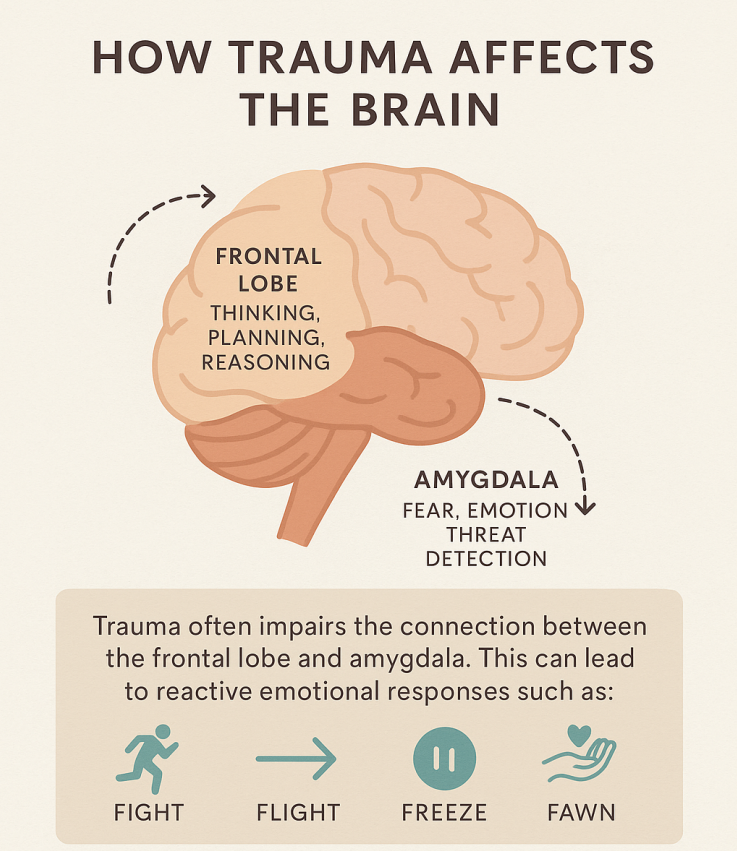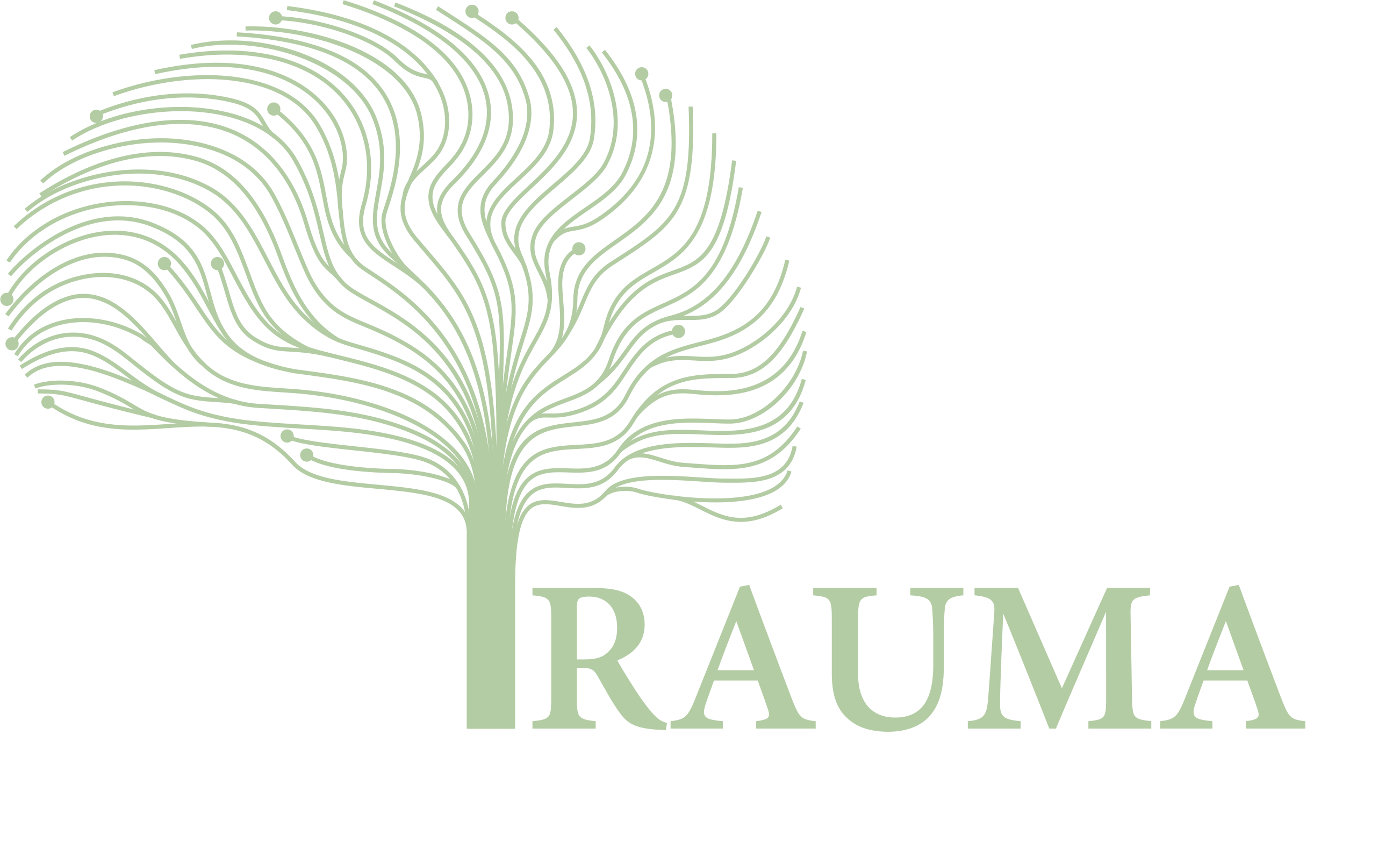What is Trauma?
Trauma can look like anxiety, depression, disconnection, perfectionism, emotional outbursts, chronic pain, people-pleasing, procrastination, or numbness. These are not personality flaws. They are symptoms of a nervous system that adapted to survive overwhelming experiences.
The Brain’s Response to Trauma
In the early stages of trauma, our minds and bodies do what they must to keep us alive. These survival responses – fight, flight, freeze, or fawn – are protective. But over time, especially with chronic or complex trauma, these patterns can become over-learned and over-generalized. Instead of helping us, they start to interfere with our relationships, goals, and sense of self.
Symptoms of Complex Trauma:
– Emotional dysregulation (e.g., sudden shifts, intense reactions)
– Chronic shame or guilt
– Difficulty trusting others
– Persistent inner critic
– Dissociation or “numbing out”
– Problems with boundaries
– Over-functioning or under-functioning
– Relational struggles, even with safe people
– Somatic symptoms like headaches, stomach issues, or fatigue
These symptoms aren’t weaknesses. They’re signs your body and brain have been trying to protect you – sometimes long after the danger has passed.
Grounding & Regulation Skills
GROUNDING EXERCISES:
– Name 5 things you see, 4 things you feel, 3 things you hear, 2 things you smell, 1 thing you taste
– Hold something cold or textured (ice cube, stone, etc.)
– Take a slow breath and say to yourself, “I am safe right now.”
REGULATION STRATEGIES:
– Opposite action: If you feel like withdrawing, try reaching out. If you feel like yelling, try whispering.
– Self-validation: “It makes sense I feel this way, given what I’ve been through.”
– Reframe thinking: “This feeling is hard, but it won’t last forever.”
A Final Thought
This is just the beginning. Everyone’s trauma story is different. That’s why healing needs to be personalized. But learning even a few skills and understanding your symptoms as adaptations, not defects, can be a powerful first step.




